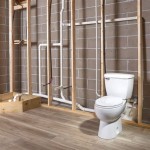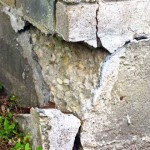How To Build A Basement Window Well Cover
Basement window wells are essential for allowing natural light and ventilation into subterranean spaces. However, they can also become receptacles for debris, water, and even small animals, potentially leading to water damage and pest infestations. Constructing a custom window well cover can mitigate these problems, offering a protective barrier while maintaining the benefits of the window well. This article provides a detailed guide on designing and building a durable and functional basement window well cover.
Before commencing construction, thorough planning is crucial. This includes accurately measuring the window well, selecting appropriate materials, and considering the desired aesthetic and functionality of the cover. Neglecting these preliminary steps can result in a poorly fitting or structurally unsound cover, negating its intended purpose.
Measuring the Window Well
Accurate measurements are paramount for a well-fitting cover. Begin by measuring the length and width of the window well opening at its widest points. If the well is not perfectly rectangular, take multiple measurements at different locations to determine the maximum dimensions. Also, measure the depth of the window well to ensure the cover will not obstruct the window. It is advisable to add a slight allowance (approximately 1/2 inch to 1 inch) to each dimension to account for minor variations and ensure ease of installation and removal.
Consider the shape of the window well. Some are circular or semi-circular. Adjust the measurements accordingly. For circular wells, measure the diameter. For semi-circular wells, measure the diameter and the distance from the straight edge to the furthest point of the arc. Sketching a diagram of the window well and noting all measurements can be helpful in the planning process.
Finally, determine the height of the window well rim above the surrounding ground. This measurement is important for deciding on the overall height of the cover and ensuring it will not be a tripping hazard. The cover should ideally sit flush with the ground or slightly raised to facilitate water runoff.
Choosing Materials
The selection of appropriate materials is critical for the longevity and effectiveness of the window well cover. Common materials include wood, metal, and polycarbonate panels. Each material offers distinct advantages and disadvantages in terms of cost, durability, and aesthetics.
Wood is a relatively inexpensive and readily available option. Pressure-treated lumber is recommended for its resistance to rot and insect infestation. However, even treated wood will eventually degrade over time, especially in contact with moisture. Consider using cedar or redwood, which are naturally more resistant to decay, although they are more expensive.
Metal frames, typically constructed from aluminum or steel, offer superior strength and durability. Aluminum is lightweight and rust-resistant, making it a good choice for areas with high humidity or frequent rainfall. Steel is stronger than aluminum but is susceptible to rust if not properly coated or galvanized. Welding is typically required for assembling metal frames, which may necessitate professional assistance.
For the cover panels, clear polycarbonate is a popular choice due to its impact resistance, UV protection, and transparency. Polycarbonate allows sunlight to penetrate, maintaining the brightness of the basement window. Wire mesh can also be used as a cover material, providing ventilation and preventing large debris from entering the well, but it offers less protection from rain and snow.
Hardware such as screws, hinges, and latches should be made of stainless steel or other rust-resistant materials. This will prevent corrosion and ensure the cover remains functional for years to come.
Design Considerations
The design of the window well cover should take into account both functionality and aesthetics. A well-designed cover will effectively protect the window well while complementing the surrounding landscape or architectural style.
A sloped design is recommended to facilitate water runoff. This can be achieved by angling the cover panels or incorporating a slightly raised frame. A sloped design prevents water from pooling on the cover, reducing the risk of leaks and ice buildup.
Hinged covers offer easy access to the window well for cleaning and maintenance. The hinges should be robust and allow the cover to be easily opened and closed. Consider using gas struts or springs to assist with lifting the cover, especially for larger or heavier designs.
Latches are important for securing the cover and preventing it from being dislodged by wind or animals. Simple locking latches can also provide added security, preventing unauthorized access to the basement window.
The aesthetic design of the cover should complement the surrounding landscape and architectural style. Wood frames can be stained or painted to match the existing trim or siding. Metal frames can be powder-coated in a variety of colors. Consider adding decorative elements, such as lattice or trim, to enhance the visual appeal of the cover.
Construction Process
The construction process will vary depending on the chosen materials and design. However, the following steps provide a general guideline for building a basement window well cover.
Step 1: Build the Frame. Cut the frame material (wood or metal) to the required dimensions based on the measurements taken earlier. For wood frames, use screws and wood glue to assemble the corners. For metal frames, welding is typically required. Ensure the frame is square and level before proceeding.
Step 2: Attach the Cover Panels. Cut the polycarbonate or wire mesh panels to fit within the frame. For polycarbonate panels, use self-tapping screws with rubber washers to secure the panels to the frame. The rubber washers will prevent water from entering through the screw holes. For wire mesh, use staples or screws to attach the mesh to the frame, ensuring it is taut and secure.
Step 3: Install Hinges and Latches. Attach the hinges to the frame and the cover. Use screws with lock washers to prevent the hinges from loosening over time. Install the latches on the opposite side of the hinges, ensuring they securely fasten the cover to the frame. Consider the placement of the hinges and latches to allow for easy operation and access.
Step 4: Apply a Protective Finish. If using a wood frame, apply a sealant or paint to protect the wood from moisture and UV damage. If using a metal frame, ensure it is properly coated or galvanized to prevent rust. Regularly inspect and reapply the finish as needed to maintain the longevity of the cover.
Installation
The installation process is equally critical to the success of the project. A poorly installed cover can be ineffective or even create additional problems, such as trapping water or becoming a tripping hazard.
Step 1: Prepare the Window Well. Clear the window well of any debris, such as leaves, dirt, or rocks. Ensure the window well is properly drained and that there are no obstructions that would prevent the cover from sitting flush on the ground.
Step 2: Position the Cover. Carefully position the cover over the window well, ensuring it fits snugly and does not obstruct the window. Make any necessary adjustments to ensure the cover is level and stable.
Step 3: Secure the Cover (Optional). In some cases, it may be desirable to secure the cover to the ground to prevent it from being moved or dislodged. This can be achieved by using stakes or anchors that are driven into the ground around the perimeter of the cover. Care should be taken to avoid damaging any underground utilities.
Step 4: Test the Functionality. Open and close the cover several times to ensure the hinges and latches are functioning properly. Check for any gaps or leaks around the perimeter of the cover.
Maintenance
Regular maintenance is essential to ensure the longevity and effectiveness of the window well cover. Inspect the cover periodically for signs of damage, such as cracks, leaks, or corrosion. Clean the cover regularly to remove debris and prevent the buildup of dirt and grime.
Check the hinges and latches to ensure they are properly lubricated and functioning smoothly. Tighten any loose screws or bolts. Repair or replace any damaged components as needed. For wood frames, reapply the sealant or paint every few years to protect the wood from moisture and UV damage. For metal frames, inspect for signs of rust and apply a rust-resistant coating as needed.
During the winter months, remove any snow or ice that accumulates on the cover. Heavy snow loads can damage the cover and obstruct sunlight from entering the basement window. Clear any debris that may be blocking the drainage pathways to prevent water from pooling on the cover.
By following these guidelines, homeowners can construct and maintain a durable and functional basement window well cover that protects their homes from water damage, pest infestations, and other potential problems.

5 Diy Window Well Covers

Homemade Window Well Covers Cover Basement

5 Diy Window Well Covers

Custom Window Well Covers Egress Plexiglas Masonry Metal The Bubble

Masonry And Wood Window Wells Well Covers Bubble

Why Diy Window Well Covers Are Never A Good Idea Experts By Bubble

Angled Risers Well Expert

Diy Window Well Cover For Under 100 Daniels Youtube

Build And Design Your Own Custom Egress Window Cover Well Covers

How To Install A Terraced Window Well In Your Basement Diy







